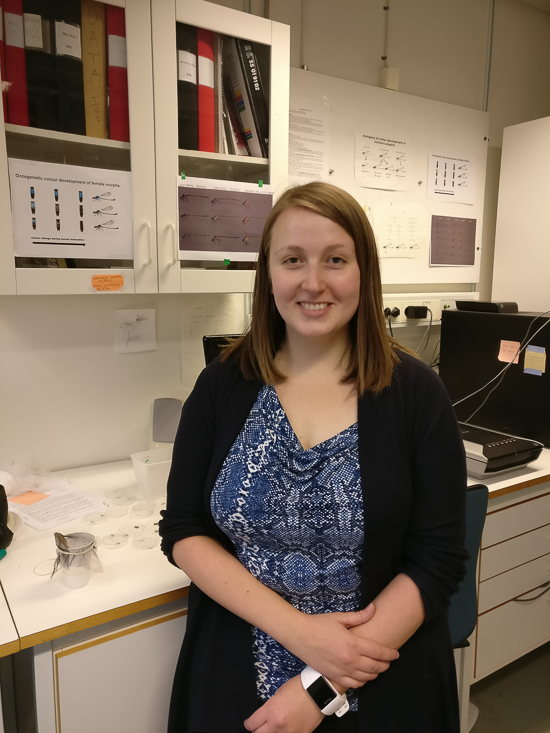
My current research focuses on understanding the mechanistic basis of phenotypic trait evolution. Specifically, my aim is to explore how external male and female reproductive structures coevolve, and how the structures themselves can potentially affect observed patterns of selection, via assortative mating. My study species, the blue-tailed damselfly Ischnura elegans, exhibits female-limited colour polymorphism, which is maintained by male harassment of the common female morphs. Males of this species, like all other Odonates (dragonflies and damselflies), possess easily distinguishable secondary sexual structures (claspers), which are used to grasp the female in order to initiate mating. These structures are obligatory for the mating to succeed. Thus, due to their importance to the mating success and their easily observable morphology, the claspers provide an exemplary system for exploring morphological evolution. In this work, I use both lab- and field-based methods.
In the past, I’ve studied animal communication with regards to the resolution of parent-offspring conflict, as well as life-history evolution with regards to large scale geographic variation in key traits, such as bodysize. In my work, I have mostly worked with insect systems, partly due to their ideal nature as study systems due to their short life cycles, and partly simply due to my lifelong fascination of the group. My main research interests lie in discerning the small scale mechanisms behind large scale patterns, and assessing the potential upstream influence that a mechanism may have for the scale and direction of evolution.
